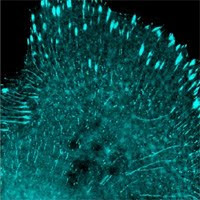The potential use of induced pluripotent stem cells (iPS) in basic research and therapeutics is still mostly on the level of imagination. However, few doubt that this field will be one of the most actively contested and fastest evolving research topics in recent history. It reminds me of the early days of RNAi discovery, when 5 papers on DNA-based shRNA/RNAi appeared within a span of a few days (one draft from the Allele team was considered a few days too late to catch up with Nature Biotech by Science, but in the end we were the only recipient of patents on the subject).
The latest big news is a publication in Science by Junying Yu et al in the Thomson lab, who induced human iPS by using OriP/EBNA1 plasmid vector [1]. This method avoids integration of transgenes into the genome, thus reducing the risk of causing mutations.
A bit about the background: OriP/EBNA1 system originated from Epstein-Bar virus, which allows the establishment of stable episomes at 5-20 copies per cell, and duplication occurs once per cell division.
There are very few suppliers of vectors with the OriP/EBNA1, because of low demand (I was told so by the only supplier at the time, which explains why it was terminated altogether). The Phoenix™ Retrovirus system actually has the complete episomal cassette on the packing vector pBMN, which if not used in packaging Eco or Ampho cells, will behave as a regular plasmid. Therefore, the Retrovirus based iPS product within Allele’s iPS product group will provide two systems in one: a retroviral vector as published by Takahashi et al, and a OriP/EBNA1 system by Yu et al. They will also contain the brightest green fluorescent protein, mWasabi.
1. Yu, J., et al., Human Induced Pluripotent Stem Cells Free of Vector and Transgene Sequences. Science, 2009.



